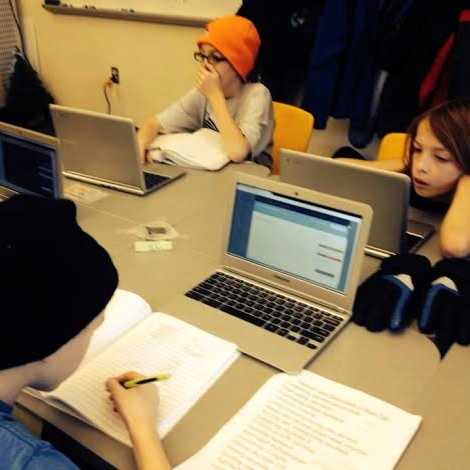Kristin Goff started slowly using online learning materials from the Khan Academy. Last spring, she tried the materials with one of her students, after parents told her about the academy.

This year, the Garden Valley Elementary School teacher has gone all-in. All 16 of her fifth-grade students are using Khan Academy materials to learn math. Along the way, Goff has changed the way she is teaching math — and her curriculum.
And Khan Academy officials are noticing. The academy is on the lookout for “shining lights,” for teachers and schools that have progress in using the online materials. So last week, Maureen Suhendra of the Khan Academy’s Mountain View, Calif., office got in touch with Goff to learn more about what she’s doing in her class, and how it could be replicated elsewhere.
“She was put in a position where she had to creatively problem-solve,” said Suhendra, the point person for the Khan Academy’s math pilot program in Idaho. “She’s been willing to innovate over and over.”
Goff’s classroom is one of 570 across Idaho taking part in the Khan Academy pilot, with some 12,800 students using the online materials. A $1.5 million J.A. and Kathryn Albertson Foundation grant is funding the pilot.
Goff has embraced the Khan Academy partly out of necessity. At first, she planned to use the online materials to supplement the textbook. But she was finding she didn’t have time to use both — and discovered that the older textbook wasn’t aligned with the new Idaho Core Standards anyway.
Goff now uses Khan Academy materials every day in class, with students working independently for 30 minutes a day. And for Goff, this opens up some options. She can work with students individually, or she can go over computer-generated data to see where students need some extra help.
By working individually, Goff’s students do not all need to learn at a fifth-grade level. They work “wherever they need to be,” said Goff. Sometimes, Goff asks some of her students to help classmates who are struggling to pick up a concept.
This represents a change in mindset, said Suhendra, herself a former teacher.
“It’s very different for the teacher to let go of being in front of the classroom every day,” she said.
But that’s one of the lessons from Goff’s classroom. Some of the other lessons also involve mindset: a willingness to try new technology, a willingness to find the formula that works for her class, and a willingness to embrace mastery-based learning, one of the recommendations of the state’s education reform task force.
“(She is) really putting student learning first,” Suhendra said.
Disclosure: Idaho Education News is funded through a grant from the J.A. and Kathryn Albertson Foundation.
